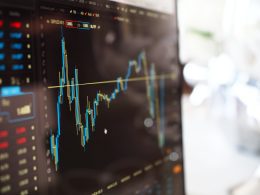As the US economy continues its recovery from the pandemic, there is a looming crisis that could derail progress. The commercial property market is struggling with bad loans and defaults, threatening to send shockwaves through the entire financial system. With banks and investors on edge, it’s important to understand what’s causing this crisis and how we can prevent it from spiraling out of control. In this post, we’ll take a closer look at the state of commercial property loans in the US and explore potential solutions to avoid catastrophe.
The current state of commercial property loans in the US
The commercial property market in the US is facing significant challenges as a result of the pandemic. With many businesses struggling to stay afloat, tenants are unable to pay rent, leading landlords to default on their loans. According to recent reports, delinquency rates for commercial mortgage-backed securities have soared to record levels, with some estimates suggesting that up to 25% of these loans could default.
The situation has been compounded by declining demand from investors for these types of assets due to uncertainty about the future of office and retail spaces. As such, banks are increasingly reluctant or unable to lend money for new projects or refinancing existing ones.
This trend is particularly worrying because it can have ripple effects throughout the economy. When property values decline and defaults increase, lenders may be forced into foreclosure proceedings which can lead to job losses and reduced economic activity in affected areas.
It’s clear that there are significant issues affecting commercial property loans in the US right now. The key question is what can be done about this problem before it spirals out of control?
The reasons behind the struggling loans
Commercial property loans in the US have been struggling for some time, and there are several reasons behind this situation. One of the main reasons is that many businesses have defaulted on their loans due to economic downturns caused by the COVID-19 pandemic. This has resulted in a significant increase in delinquencies and non-performing loans.
Another reason is that banks may have taken on too much risk when lending money to commercial real estate projects. In some cases, they may not have thoroughly assessed the borrower’s ability to repay the loan or accurately evaluated market conditions before issuing funds.
Furthermore, changing regulations and interest rates can also lead to struggling commercial property loans. New regulatory requirements could make it harder for borrowers to qualify for financing while interest rate fluctuations could result in higher monthly payments, making it difficult for borrowers to keep up with their payments.
Speculative investments in commercial real estate projects can also lead to bad loans as investors often purchase properties at inflated prices without taking into account potential risks or long-term return on investment.
In summary, there are multiple factors contributing to the current struggles seen with commercial property loans across America today. It’s essential that banks take necessary measures like thorough evaluations of borrowers’ abilities before granting them financing or investing only after evaluating all possible risks associated with a project.
How this could impact the economy
The struggling commercial property loans have the potential to create a domino effect on the economy. With banks facing difficulty in collecting payments, they may face liquidity issues leading to reduced lending capacity. This would result in businesses being unable to secure loans for expansion or new ventures.
Furthermore, if businesses are unable to secure financing, job creation could be hindered, and existing jobs may be lost as companies struggle with cash flow problems. This can lead to increased unemployment rates and subsequently affect consumer spending habits.
The economic impact of this crisis is not limited locally but can also have effects globally. Investors who hold bonds backed by these bad loans may experience significant losses leading them into panic selling; hence affecting financial markets worldwide.
Moreover, this crisis can cause a ripple effect on other industries that rely heavily on commercial real estate like construction firms and property management companies resulting in job losses and reduced revenue streams for those companies as well.
In summary, the struggling commercial property loans have far-reaching implications beyond just the banking sector. It has the potential to disrupt employment opportunities across many sectors of the economy while negatively impacting growth prospects both domestically and internationally.
What can be done to prevent a crisis?
One possible solution to prevent a crisis in the commercial property loan sector is for banks to take a more proactive approach in assessing their risk exposure. This can involve reviewing their existing portfolio of loans and identifying any potential problem areas early on, before they become too difficult or costly to manage.
Another approach would be for banks to tighten lending standards, particularly when it comes to underwriting new loans. This could involve requiring higher down payments from borrowers, conducting more thorough due diligence on properties and businesses seeking financing, and implementing stricter credit score requirements.
In addition, regulators could play a role in preventing a crisis by monitoring the banking industry closely and taking action if necessary. For example, they could require banks to hold more capital against risky assets such as commercial property loans or conduct stress tests periodically to identify weaknesses before they cause problems.
It’s important that borrowers themselves take responsibility for managing their debt responsibly. This includes being transparent with lenders about their financial situation and ensuring that they have sufficient cash flow and collateral to repay their debts even if market conditions worsen unexpectedly.
Conclusion
As the US economy continues to recover from the impact of COVID-19, it is important to address the looming crisis that could arise from struggling commercial property loans. Banks must take immediate action to prevent a repeat of what happened in 2008.
The government also has a role to play in protecting the economy by providing support and implementing policies that can help stabilize the market. Monitoring lending practices and ensuring responsible lending is crucial in preventing another financial crisis.
However, all stakeholders must work together towards finding sustainable solutions for addressing these challenges. The future of our economy depends on how we handle this issue today.











